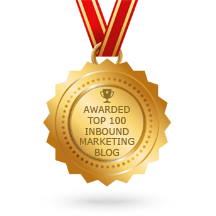
As a marketer responsible for generating leads, do you ever get frustrated with the sales team for the way in which they follow up, or don’t follow up leads?
As a sales person responsible for closing the leads that marketing provide, do you ever get frustrated with the poor quality of the leads, or lack of leads provided?
The disconnect between marketing and sales maybe the reason your company isn’t hitting its conversion targets. One solution is for marketing and sales to align, and work together to achieve their lead, customer and revenue goals.
Research conducted by the Aberdeen Group indicates that when marketing and sales communicate, and work together they are more likely to achieve their goals, convert more customers and grow revenue targets. Alternatively the research also indicates that companies that don’t have marketing and sales alignment see a decline in revenue and lower conversion rates.
The purpose of this article is to share with you some practical tips on how marketing and sales can work together to ensure the company achieves its revenue targets.
Getting Started With Sales and Marketing Alignment
Lead Definition
Both marketing and sales should work together and agree on lead definitions, what determines a sales qualified lead and what content needs to be created to generate qualified leads and nurture them so they’re sales ready
For example; a sales qualified lead might be someone who has downloaded an ebook on your website and meets certain criteria like; job title, company description, size of company and location - it would then be the role of marketing to gather this insight before handing to sales.
The Numbers
Together sales and marketing should agree on the quantity of leads needed to convert into customers. Use historical data if available. Otherwise, look at what is realistic for your industry.
The best way to determine achievable numbers is to work backwards. First agree on revenue targets, and then where that revenue will come from. How many customers, how much will they spend and how often? Are these new customers or existing customers?
Both teams should then agree on what is a realistic conversion rate for sales to convert a qualified lead into a customer. Keep working it back from customer, to sales qualified lead, to marketing qualified lead, to new lead. Ensure these goals are realistic for both marketing and sales to achieve.
Your marketing and sales targets might look like:
- To meet revenue targets for the company, sales and marketing agree on 10 new customers per month.
- Sales say they can convert a sales qualified lead into a customer at 5:1.
- Sales confirm that a sales qualified leads is, for example:
- A company that is located in Australia or New Zealand
- Has annual turnover of $10M+
- Know the contact name, phone number and email of the decision maker, and influencer.
- The lead has watched a webinar, downloaded an ebook and visited your product and pricing pages, within the past 5 days.
Need help closing more leads into customers?
Find out how TIMCo can help.
Lead Scoring
Once sales has provided a very clear picture of a sales qualified lead (SQL), it is marketing’s role to ensure they have this information before qualifying a lead and passing to sales. For each criteria assign a value (points), weighted on its importance, and when a lead reaches a certain value they qualify as a sales qualified lead. This is known as ‘lead scoring’.
If you have the marketing tools to do this, you can set up a workflow, notifying the sales department in real time as soon as a lead qualifies as an SQL. Automating this process improves the efficiency of the marketing team, and the conversion rates for sales because they’re getting the information straight away.
Performance
The most effective strategy here is to become transparent with up to date, real time metrics. For marketing and sales alignment to work well both should be using a CRM - Customer Record Management.
A CRM gives you access to real time data. Because your customer and sales information is centralised, you have instant access to a full range of reports and analytics about the habits of your customers.
This information gives you clear insight into your sales funnel and where it is working effectively, and more importantly, outlining any areas for improvement that will ultimately boost conversion rates.


